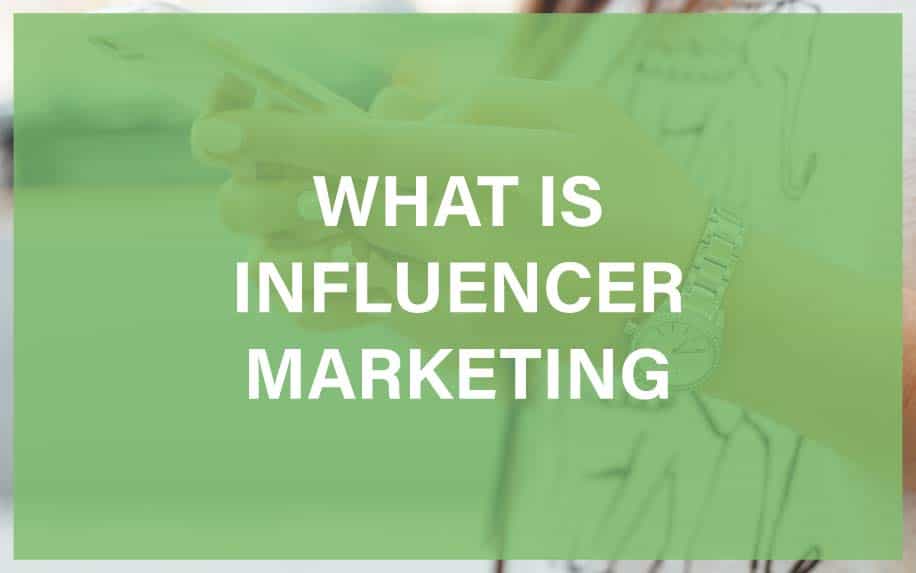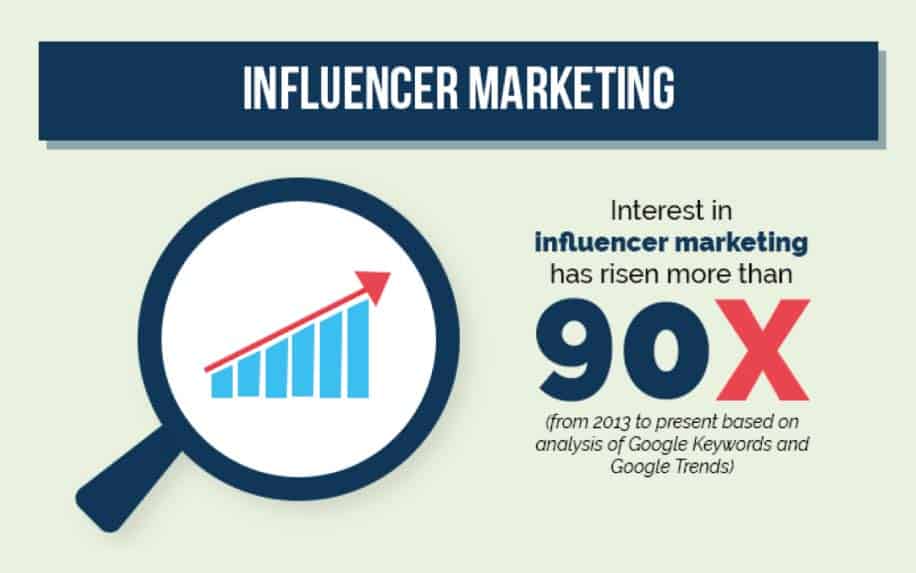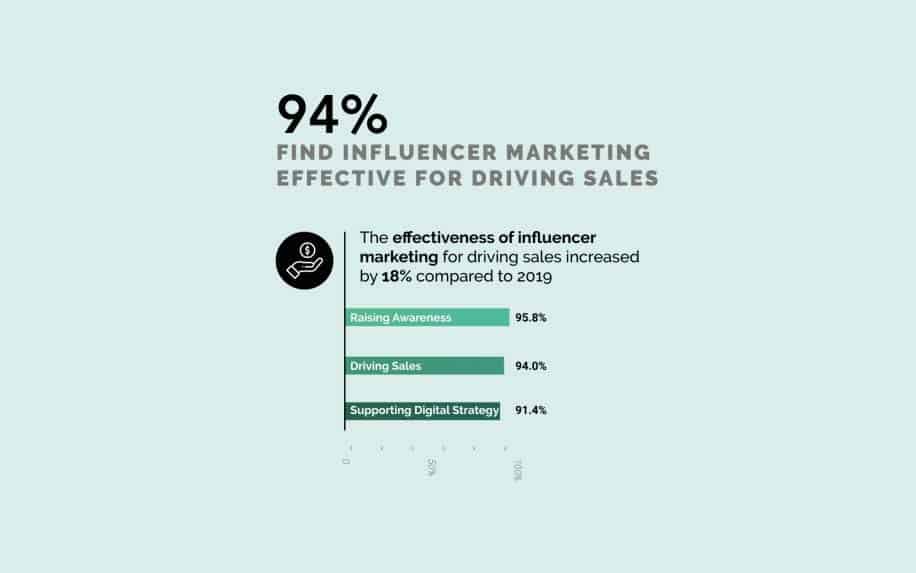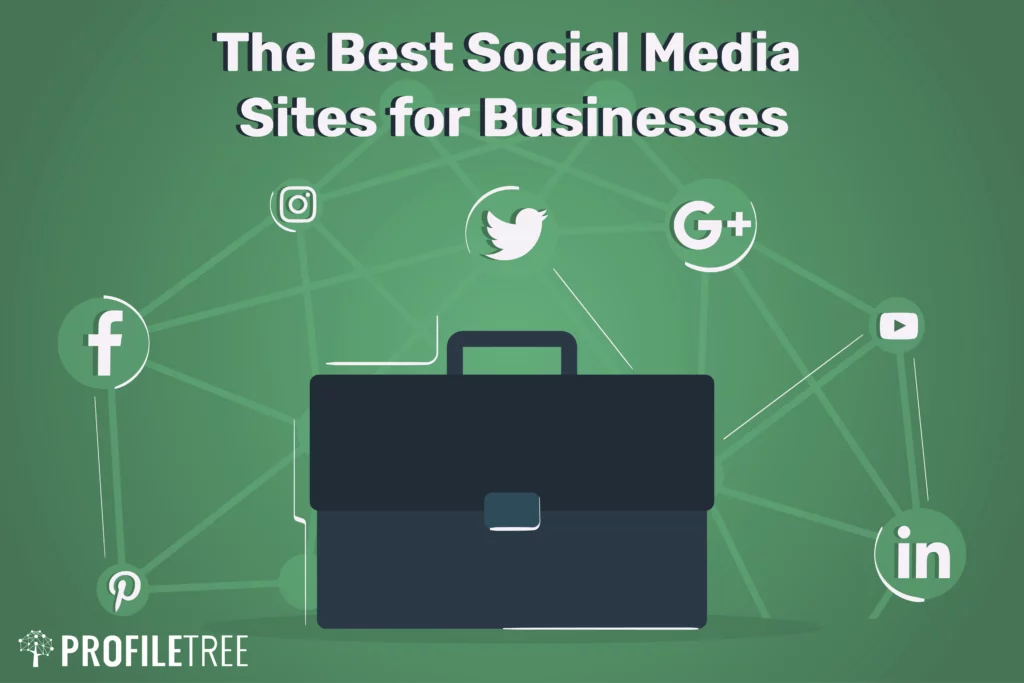What is influencer marketing? Influencer marketing is popular for good reasons and, if done right, it may end up having unparalleled growth, sales and results for a brand. It helps you to reach new audiences, without having to build them yourself.
This naturally saves time, as professional influencers already have highly developed and specific audiences. These kinds of audiences take a long time to establish. In fact, growing a strong audience can take many years.
A strategic marketing approach that focuses on leveraging the influence of individuals with a large and engaged following on social media platforms to promote brands and their products or services. These individuals, known as influencers, have the power to shape consumer perceptions and drive purchasing decisions, making them valuable assets for brands seeking to connect with their target audience.
Key Characteristics:
- Leveraging Social Influence: Influencer marketing capitalizes on the trust and credibility that influencers have built with their audience, allowing brands to tap into this pre-established relationship.
- Strategic Collaboration: Influencer marketing involves a deliberate partnership between brands and influencers, ensuring alignment with brand messaging and campaign objectives.
- Authentic Endorsements: Effective influencer marketing campaigns prioritize authenticity, encouraging influencers to genuinely recommend products or services to their audience.
Let’s take a closer look at the basics.

Table of Contents
What is Influencer Marketing?
Influencer marketing is made up of two things:
- Influence,
- Marketing.
Influence is your ability to have an effect on development, character, or behaviour of something or someone. Marketing is the action or the business of promoting and selling some products and services.
Influencer marketing is the process of promoting or selling products and services through other people who possess the capacity of having an effect on a brand’s character.
Simply put, influencer marketing involves the process of identifying, researching, supporting and engaging with individuals, who have the ability to create high-impact dialogue with customers about a given brand, services and other services.
Even though influencer marketing is fashionable right now, it is important to note that it is not a new concept as such. This is an exercise that has been taking place for a long time.
Athletes, celebrities, and influential leaders have been one of the main influencers in their respective fields with a lot of brands willing to command a huge market share partnering with such people for purposes of promoting the services and products that they are offering.

Types of Influencer Marketing:
- Celebrity Influencer Marketing: Partnering with well-known celebrities with a massive following to reach a broad audience.
- Micro-Influencer Marketing: Collaborating with niche influencers who have a smaller but highly engaged following in a specific industry or interest area.
- Social Media Influencer Marketing: Focusing on influencers who are active and influential on specific social media platforms, such as Instagram, TikTok, or YouTube.
Benefits:
- Enhanced Brand Awareness: Influencer marketing can significantly increase brand awareness and visibility among the target audience.
- Improved Brand Reputation: Positive influencer endorsements can enhance brand perception and build trust among consumers.
- Increased Brand Advocacy: Influencers can transform into brand advocates, encouraging their followers to become loyal customers.
- Targeted Audience Reach: Influencer marketing allows brands to reach specific demographics and niche audiences effectively.
- Measurable Campaign Results: Influencer marketing campaigns can be tracked and measured to assess their effectiveness.
Strategies for Successful Influencer Marketing Campaigns:
- Identify Relevant Influencers: Select influencers who align with your brand’s values, target audience, and campaign goals.
- Establish Clear Objectives: Define the specific objectives you aim to achieve through the influencer marketing campaign.
- Develop Authentic Content: Collaborate with influencers to create engaging and genuine content that resonates with their audience.
- Track Campaign Performance: Monitor key metrics such as engagement rates, website traffic, and sales conversions to evaluate campaign success.
- Maintain Ongoing Relationships: Nurture long-term relationships with influencers for continued brand support and advocacy.
Ethical Considerations in Influencer Marketing:
- Transparency and Disclosure: Influencers must clearly disclose their partnership with brands to maintain transparency.
- Authenticity and Honesty: Influencers should genuinely recommend products or services they believe in to avoid misleading their audience.
- Avoiding Deception: Influencer marketing should not involve deceptive practices or fake reviews.
- Compliance with Regulations: Adhere to relevant advertising regulations and guidelines to ensure ethical marketing.
Why Influencer Marketing?
Ever wonder why influencer marketing has turned out to become unique in the present age? Social media communication has gone ahead to level the playing field while giving everybody a chance to share their voice.
Anybody with access to the internet can go ahead to share their content and opinion, and if they do it well enough, then they become influencers.
Today, big and small brands are beginning to allocate a significant number of their budgets to their respective influencer marketing initiatives.
Additionally, many influencers work in very specific niches, so they’re trusted voices on their topics.
A lot of companies are scrambling to create divisions while hiring staff with sufficient experience to execute influencer marketing as part of their individual service offerings.
Influencer marketing is an important and one of the best strategies that companies can use, and if done correctly, it can single handedly be one of the biggest catalysts for the growth of a business.
Social Influence Marketing
Influencer marketing fills an important gap. That is, most customers don’t trust marketing messages. People are skeptical of anyone who’s trying to sell them something.
However, influencers are the people who make everything possible. Influencers are typically blogging and social media mavens who command a massive and loyal following that have the power to affect consumer decisions to a one of the highest degrees.
It all comes down to authenticity. People trust influencers more than they do brands.
Influencers are almost found in every social platform and in every niche that is unimaginable.
Today more than ever, companies willing to remain relevant in the face of increased competition realise that in order to do so, social media influencers marketing is necessary.
As mentioned earlier, social influencers are crucial to successful and increased brand exposure in addition to sales. Influencers go ahead to take a significant number of routes aimed at collaborating with brands on a number of influencer campaigns.

Why Should You Use Influencer Marketing?
There are a lot of people who are most likely to purchase goods or seek the services of certain companies based on the social influencers that are used.
There are a number of influencers who have managed to gather huge followings based on aspects such as their dress codes, quirkiness, authority, and their voice among others.
Luckily, most companies willing to capture a significant market share have tried their best to use such people to promote the goods and services that they offer.
There are a host of advantages associated with working or establishing connections with social influencers.
With social influencers in place, companies have higher chances of cultivating or building positive relationships with their clients.
This gives them control of their social influence campaigns, as well as enabling companies to direct their content where they wish.
As of today, there are hundreds of influential persons across the society that companies and other brands have relied on for purposes of selling or promoting their products and services. A lot of companies use these strategies to sell more of their products and services.
How do Influencers Make Money?
Publishing and blogging across several social media channels can be a hobby to a number of people, and a full-time career for others.
Most social media influencers that are in business today have discovered that there are a number of ways that they can monetize their passion..
The amount of money that influencers get paid for their marketing initiatives depend on a number of factors such as:
- Their terms and scope of work,
- Their chosen platform,
- Their category or niche,
- Their reach.
Many influencers make a significant amount of money that enables them to feed their families.
There are some people who believe that social media influencers make little money.
So, how much money do social media influencers make? Some of the most prominent social media influencers make good money.
For instance, some of the most sought-after influencers make more than £20,000 while others make more than £2,500 to £4,500 per post.
Furthermore, others are known to charge between £20,000 and £100,000 in a single campaign only.
As of now, among other sites, YouTube is regarded as one of the most supreme sites with one of the most followed influencers with more than 7 million subscribers that are able to command slightly more than £300,000 for video partnerships only.
Examples
Influencer marketing is established as one of the most important types of online or online marketing strategies, and it has transformed to become more than just an initiative used by businesses regardless of their sizes that cannot afford traditional advertising revenues/fees.
A number of business entities are lately realising that influencer marketing assists them reach their respective target audiences. The following are apt examples of influencer marketing done right.
Inspiring Use of Influencers
One of the best examples of influencer marketing include Subaru’s campaign that featured three superstar influencers.
Here, Subaru went ahead to solicit the assistance of three most influential influencers that assisted them for video expertise with such an advertisement reaching millions of people across the globe.
Wal-Mart and Tinder are also apt examples of firms that have employed influencer marketing in a bid to promote or market their products to their customers.
Wal-Mart, the retail giant once partnered with more than five Instagram influencers for purposes of raising funds aimed at Feeding America.
On the other hand, in a bid to advertise and market is growing and most preferred online dating service, Tinder sought the help of six Instagram influential and memes and the help of Whitney Cummings to do so.
This is a campaign that subsequently bolstered Tinders’ reputation as a conscious, self-aware, and modern company that is caring for its users.
Analysing Influencer Marketing
Influencer marketing is an exercise that is lately being used by a lot of companies across all industries. The benefit of influencer marketing is that a company can tap into a ready market that is being held by the influencer.
Regardless of the market segment that you are targeting, there will always be an influencer that will resonate well with them.
Of course, a company needs to carry out a comprehensive data collection exercise to understand the market needs vis a vis its products. This is referred to as marketing analysis.
Through varying out this marketing analysis, a company will have the data that it needs in order to carry out a statistical analysis to ensure that its product(s) will be received well in the market.
Statistical analysis will ensure that any relationship between the different influencers can be identified. For influencer marketing to be effective, a person needs to identify the influencers that will best serve their business.
Data analysis from your target market recognises the influences that will best resonate with the target market that you are looking to exploit. Alternatively, you might choose to outsource your influencer strategy to a professional marketing agency.
Latest statistics on the influencer marketing market size and content that resonates with audiences:
Market Size
The global influencer marketing market is expected to reach $24.1 billion by 2025, up from $16.4 billion in 2022. This growth is being driven by several factors, including the increasing popularity of social media, the growing influence of influencers, and the increasing adoption of influencer marketing by businesses of all sizes.
Content that Resonates
The type of content that resonates with audiences varies depending on the platform and the target audience. However, some general trends include:
- Authenticity: Consumers are increasingly skeptical of advertising and are more likely to trust recommendations from people they know and respect. Influencers who are authentic and genuine in their endorsements are more likely to be successful.
- Engaging Content: Influencers should create content that is engaging and interesting to their audience. This could include videos, photos, live streams, or blog posts.
- Relevant Content: Influencers should create content that is relevant to their audience’s interests. This could include content about fashion, travel, food, or lifestyle.
- High-Quality Content: Influencers should create high-quality content that is well-produced and visually appealing.
Additional statistics on specific types of influencer marketing:
- The average engagement rate for influencer marketing posts is 5.7%, which is significantly higher than the average engagement rate for organic social media posts.
- Micro-influencers, who have a smaller following but a more engaged audience, are generating a higher return on investment (ROI) than macro-influencers.
- Influencer marketing campaigns can generate a 2-22 times ROI.
- The top three industries using influencer marketing are consumer goods, retail, and media and entertainment.
These statistics demonstrate the power of influencer marketing and the importance of creating content that resonates with audiences. By following the tips above, businesses can create influencer marketing campaigns that are successful and help them achieve their marketing goals.
Examples of effective influencer marketing campaigns:
1. gymshark’s #StrongNotSkinny Campaign
Gymshark, a popular fitness apparel brand, partnered with a variety of fitness influencers to promote their #StrongNotSkinny campaign, which celebrated body positivity and strength over traditional beauty standards. The campaign was a huge success, generating over 1 million posts on social media and helping Gymshark to become one of the most popular fitness brands in the world.
2. Dove’s Real Beauty Sketches Campaign
Dove, a personal care brand, launched the Real Beauty Sketches campaign to challenge conventional beauty standards and promote self-acceptance. The campaign featured a video that showed women describing themselves to a sketch artist, and then being sketched by a different artist who had never seen them before. The video went viral, generating over 114 million views on YouTube and helping to boost Dove’s sales.
3. Chipotle’s #ChipotleSpices Challenge
Chipotle, a Mexican grill restaurant chain, partnered with a variety of food influencers to promote their #ChipotleSpices Challenge. The challenge encouraged influencers to create their own recipes using Chipotle’s spices. The campaign was a success, generating over 120,000 entries and helping to increase Chipotle’s sales.
4. Glossier’s #GetGlossy Campaign
Glossier, a skincare and makeup brand, partnered with a variety of beauty influencers to promote their #GetGlossy campaign. The campaign encouraged influencers to create their own tutorials and tips on how to use Glossier’s products. The campaign was a success, generating over 1 million posts on social media and helping to increase Glossier’s sales.
5. ASOS’s #AsSeenOnMe Campaign
ASOS, an online fashion retailer, partnered with a variety of fashion influencers to promote their #AsSeenOnMe campaign. The campaign encouraged influencers to style their own ASOS outfits and share them on social media. The campaign was a success, generating over 100,000 posts on social media and helping to increase ASOS’s sales.
These are just a few examples of effective influencer marketing campaigns. By partnering with the right influencers and creating engaging content, businesses can use influencer marketing to achieve their marketing goals.
FAQ
Q: What is the difference between influencer marketing and traditional advertising?
A: Influencer marketing is a form of marketing that focuses on leveraging the influence of individuals with a large and engaged following on social media platforms to promote brands and their products or services. Traditional advertising, on the other hand, typically involves paid placements of ads on websites, social media platforms, or other media channels.
Q: How do I measure the success of an influencer marketing campaign?
A: To measure the success of an influencer marketing campaign, you should establish clear and measurable key performance indicators (KPIs). Relevant KPIs may include brand awareness, engagement, conversions, and return on investment (ROI).
Q: How do I avoid common mistakes in influencer marketing?
A: Some common mistakes to avoid in influencer marketing include selecting influencers who are not a good fit for your brand, creating inauthentic content, and not being transparent about paid partnerships.
Q: How much does influencer marketing cost?
A: The cost of influencer marketing can vary depending on the influencer’s tier, the scope of the campaign, and the industry. However, you can expect to pay anywhere from a few thousand dollars to hundreds of thousands of dollars for a single influencer marketing campaign.
Q: What are some of the risks of influencer marketing?
A: Some of the risks of influencer marketing include product-influencer misalignment, inauthentic endorsements, lack of transparency, and reputational damage.
Conclusion
Influencer marketing has become a powerful tool for brands of all sizes to connect with consumers and achieve their marketing goals. By carefully selecting influencers, creating engaging content, and measuring the success of your campaigns, you can leverage influencer marketing to build brand awareness, drive engagement, and generate sales.


